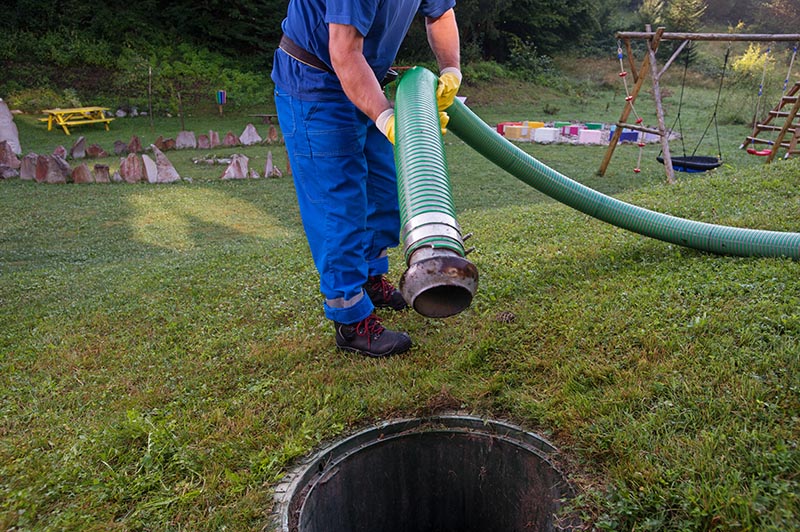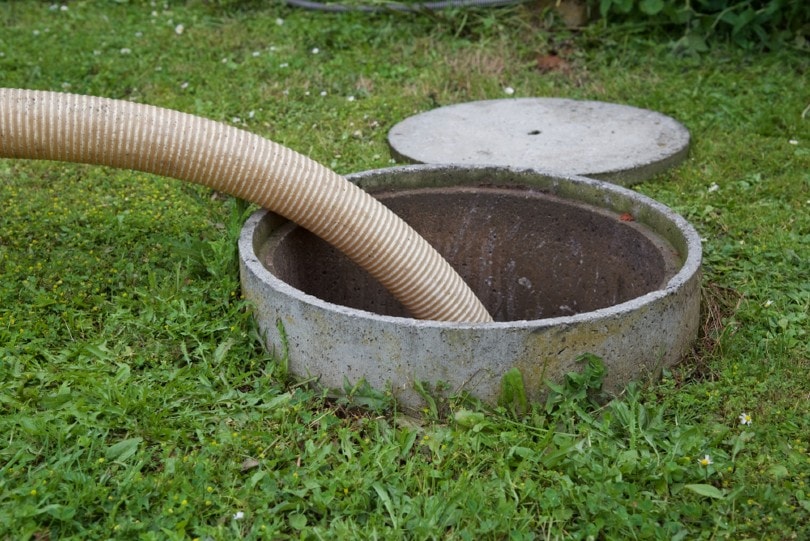How to Kill Roots in a Septic Tank (4 Expert Tips)
-

- Last updated:

Tree roots are attracted to the water and waste in your septic tank and pipes. Therefore, they can infiltrate the septic system through cracks in the concrete tank or compromised joints in the pipes. That can lead to clogs and blockages that manifest as back-ups and overflows.
Damage to the pipes can also cause leaks that can contaminate the groundwater, thus putting your health and your loved one’s health at risk. You may also have to dig deeper into your pockets since the damage may be too costly to repair.
Fortunately, you can kill the roots in your septic tank and pipes before they can cause further damage. Read on to learn about the different methods you can use to eliminate them.
The 4 Ways to Kill Roots in Septic Tanks
1. Using Chemicals
One of the easiest ways to kill roots in your septic tank is by chemicals. Copper sulfate is the most common treatment available. You need to flush two pounds of the chemical down the lowest toilet for every 300 gallons of effluent in your septic tank.
Copper sulfate usually takes several weeks to work. The roots dry after absorbing it, but other parts of the plant are unaffected since the solution does not travel that far up the roots.
One significant pushback against copper sulfate is the danger it poses to the environment. The chemical can contaminate groundwater, damage crops, and kill aquatic life.
Copper sulfate poses a significant danger to humans as well. For one, it can irritate the eyes and skin upon contact. Moreover, consuming large amounts of it in high concentrations can cause death.
Therefore, you must follow all the safety instructions on the label when using this chemical. You should also seek alternative solutions if the septic system is near a well.
Dichlobenil is a safer alternative. It works faster than copper sulfate (two or three days) because it sticks to the roots. The Environmental Protection Agency has approved the herbicide for general use.
Dichlobenil is usually available as a foaming product. It, therefore, fills the entire pipe to dissolve all the roots. Since it is a contact herbicide, it will only kill whatever it gets in contact with without affecting other shrubs.

2. Mechanical Removal
After pumping the tank, you can cut the roots mechanically using a hoe or pitchfork. But be careful not to physically enter the tank without proper ventilation since the poisonous gasses could kill you.
Alternatively, you can use a more sophisticated tool, such as a powered auger. It features a rotating head with sharp blades that slice the roots into small pieces.
Besides removing trees from the tank, you can also use a powered auger to cut roots inside the pipe. However, you may need to insert a camera inside the plumbing pipes to locate them first.
3. Using a Hydro Jetter
The hydro jetter uses a pump and pressurized water to flush out the roots from the pipes. It also removes unwanted debris, sand, and grease. Although the method is effective, it may be quite expensive.
4. Removing the Trees
Roots can be very challenging because they can still regrow after cutting or killing them. You could be fighting an endless battle as long as the tree is still alive.
You can eliminate the problem once and for all by cutting down trees. Every tree within 50 feet of the septic system is a possible culprit.

 How to Spot a Possible Root Infiltration
How to Spot a Possible Root Infiltration
Spotting a root infestation early on is crucial because it will allow you to get rid of the problem before it gets out of hand. Several telltale signs may appear.
Roots clog the system and restrict the flow of wastewater. So, you will first notice sluggish drains and slow-flushing toilets making gurgling noises. You may also experience sewage back-ups in your showers and drains.
Outside, the ground around the sewage system may become spongy as the pipes leak or the tank overflows. If the problem persists, pools of water, accompanied by foul odors, may appear on the lawn.
It may be difficult to distinguish a root infestation from other clogging issues. But you can always hire a specialist to verify by inserting a camera inside the pipes.
Consult a PLUMBING expert
Find a plumbing specialist in your area, and get free, no-commitment estimates for your project.

 Final Thoughts
Final Thoughts
Inspecting and maintaining your septic system is essential in avoiding a root intrusion. The sooner you identify and fix faults in the system, the less likely the roots will infiltrate it.
But the best preventive strategy begins by selecting the trees to plant on your property. Avoid fast-growing tree varieties that often have aggressive roots. These include birch, willow, and poplar.
Where you plant the trees is also critical. Growing them near the septic tank and pipes will increase the likelihood of an infiltration.
Featured Image Credit: KaliAntye, Shutterstock
Contents

